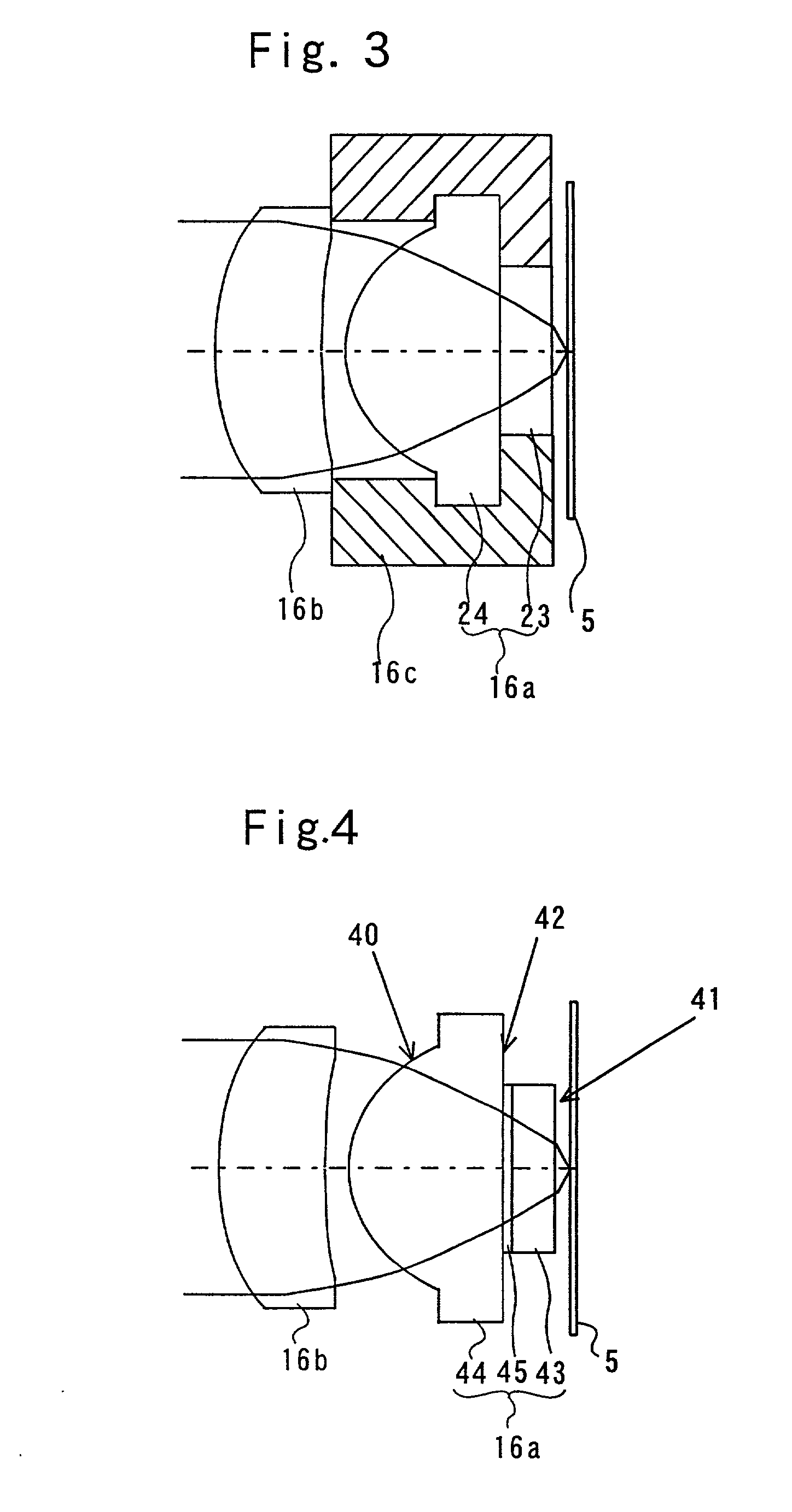Complex objective lens and method for manufacturing the same and optical pickup device and optical recording/reproducing apparatus
a technology of optical pickup and objective lens, which is applied in the field of optical systems, can solve the problems of difficult production of thick second lens by glass press molding, lens having a small center radius of curvature cannot be very thick, and the object lens comprising two lenses would cost more. to achieve the effect of increasing the tolerance of axis deviation
- Summary
- Abstract
- Description
- Claims
- Application Information
AI Technical Summary
Benefits of technology
Problems solved by technology
Method used
Image
Examples
second example
[0078] A complex objective lens of second example according to the invention will be described concretely. The wavelength of the light source used is 430 nm. The volume of the preformed glass ball is 11.0 mm.sup.3. The diameter of preformed ball is 1.38 mm. The paraxial curvature radius of the aspherical surface glass lens is 1.42 mm. The second lens volume including the flat portion is 16.5 M.sup.3. The diameter of preformed ball for the second lens volume including the flat portion is 1.58 mm. The aspherical surface shape in the second example is the same as that of the first example.
[0079] The following Tables 5 and 6 show data of respective aspherical lenses of the forgoing objective lens which are automatically designed with a computer.
5 TABLE 5 Surface Curvature Surface Refractive Number Radius Interval Index Medium 1 4.38693 1.20000 1.50497 FCD1 2 15.85658 0.20000 1.00000 Air 3 1.41642 1.70000 1.76334 M-NBF1 4 0.00000 0.60000 1.50497 FCD1 5 0.00000 0.14870 1.00000 Air 6 0.000...
first embodiment
[0081] FIG. 10 is a graph illustrating a change in wave front aberration with respect to the tolerance in a lens interval between the first and second lenses of an objective lens unit of an optical pickup in another embodiment according to the invention. The figure shows a dependence with the horizontal axis representing the lens interval tolerance and the vertical axis representing the quantity of wave front aberration (rms (.lambda.)) on the optical axis. As shown in this figure, the wave front aberration of the objective lens unit is limited to about the Marechal 's condition 0.07.lambda. in a range of lens interval tolerance larger than that of the
[0082] FIG. 11 shows a change in wave front aberration of the objective lens unit with respect to the eccentric distance of lens. In the Figure, the horizontal axis represents the distance between both the optical axes the first and second lenses (mm), and the vertical axis represents the quantity of wave front aberration (rms (.lambda...
PUM
| Property | Measurement | Unit |
|---|---|---|
| wavelength | aaaaa | aaaaa |
| wavelength | aaaaa | aaaaa |
| wavelength | aaaaa | aaaaa |
Abstract
Description
Claims
Application Information
 Login to View More
Login to View More - R&D
- Intellectual Property
- Life Sciences
- Materials
- Tech Scout
- Unparalleled Data Quality
- Higher Quality Content
- 60% Fewer Hallucinations
Browse by: Latest US Patents, China's latest patents, Technical Efficacy Thesaurus, Application Domain, Technology Topic, Popular Technical Reports.
© 2025 PatSnap. All rights reserved.Legal|Privacy policy|Modern Slavery Act Transparency Statement|Sitemap|About US| Contact US: help@patsnap.com



